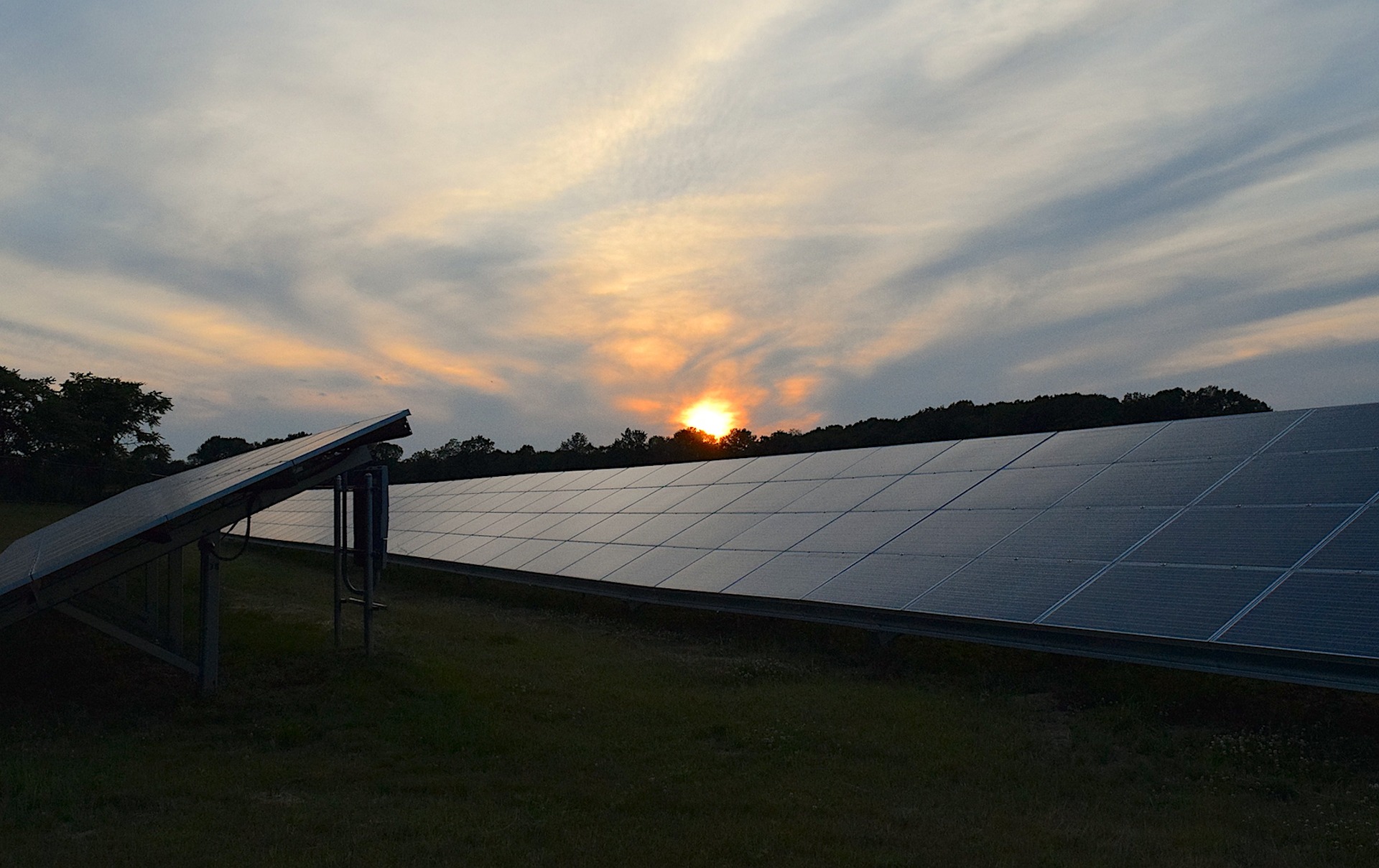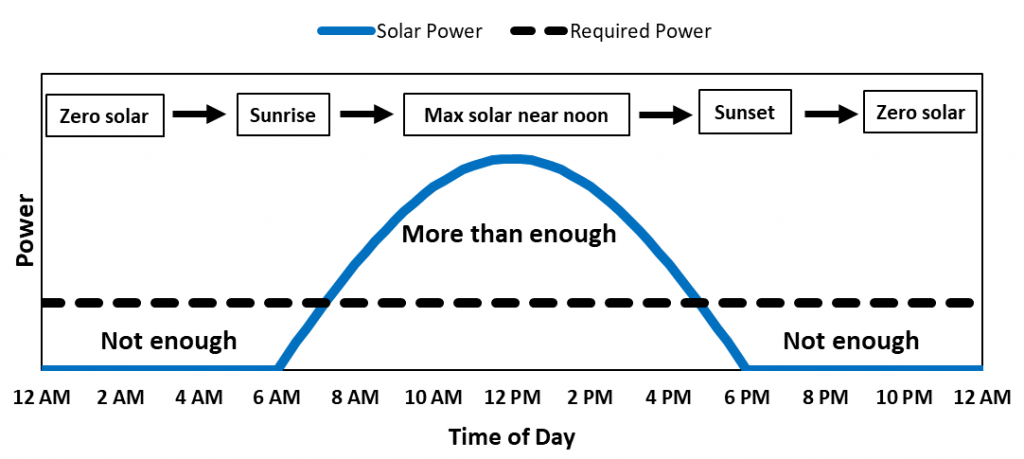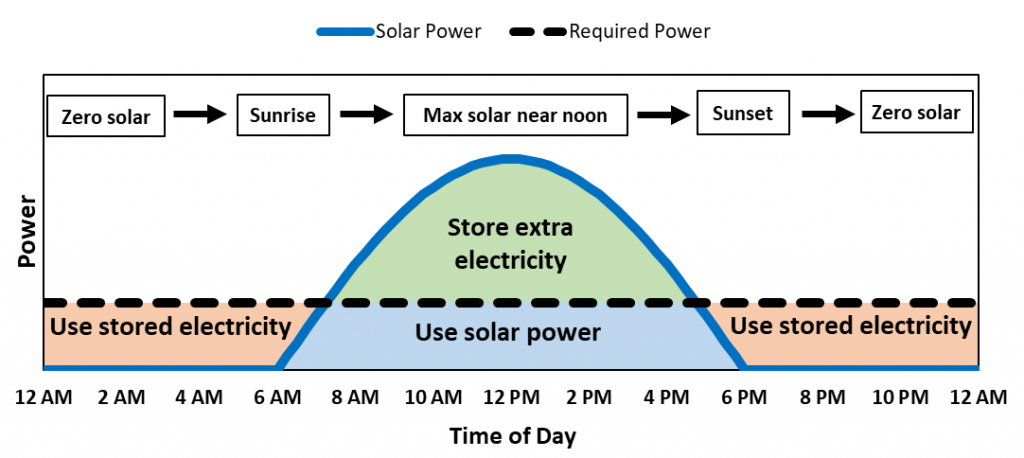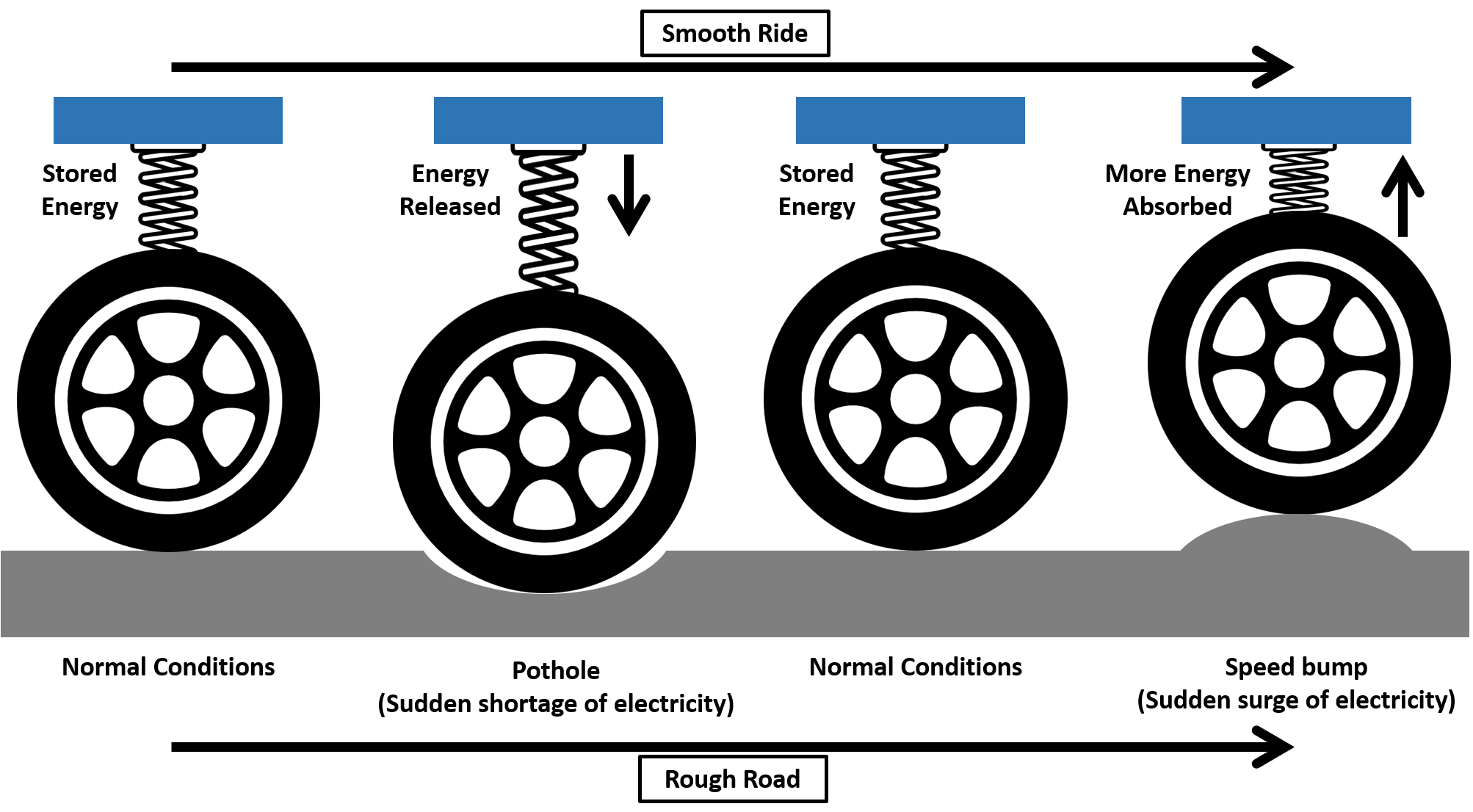
As we replace fossil fuel power plants with renewable energy sources such as wind and solar, the electricity grid loses two critical features that make it reliable:
– Control over the amount of power being generated
– Flexibility to withstand disturbances and avoid blackouts
If we want to keep reducing our dependence on fossil fuels, we need to make renewable energy controllable and flexible, and energy storage is our best solution. One common example of energy storage is your cell phone battery: if you charge the battery, you can power your phone when you aren’t plugged in. But what does this have to do with renewable energy?
Let’s start with control. Even on a perfect sunny day, the power produced by a solar panel changes as the sun moves across the sky. This is shown by the blue line in the diagram below. Say we require constant power to run a factory non-stop, as shown by the black dashed line. In this example, we can’t always get the required power because we can’t control the sunshine.

Instead of using fossil fuels for power at night, we can store the extra solar power so we can use it whenever we need it. This is illustrated in the diagram below. The same can be done with wind power as the wind speed goes up and down throughout each day. The takeaway here is that energy storage allows us to control when we use renewable energy.

Moving on to flexibility. Fossil fuel power plants produce electricity by spinning enormous generators at high speeds. Energy is stored in any spinning object, so these generators also provide built-in energy storage for the electricity grid. Generators don’t store nearly enough energy to power a factory overnight, but enough to make the grid flexible. This is kind of like the suspension in a car, as shown in the diagram below. Under normal conditions, the spring is partially compressed and therefore has stored energy. When you hit a pothole, the spring automatically releases energy as it decompresses for an instant. When you hit a speedbump, the spring automatically absorbs more energy as it compresses further for an instant. In each case, energy storage acts instantaneously to protect you from feeling the full impact.

On the grid, a sudden shortage of electricity (such as a damaged power line) is like a pothole, while a sudden surge of electricity (such as a lightning strike) is like a speedbump. When these disturbances occur, a spinning generator will immediately slow down (releasing energy) or speed up (absorbing energy), just for a moment until the grid stabilizes. This flexibility protects the grid from feeling the full impact of disturbances. If you’ve already read about generator ‘inertia’ in my last blog, you can probably see now that inertia is just a form of energy storage.
Unlike fossil fuel power plants, wind turbines and solar panels don’t have built-in energy storage. Powering an electricity grid with only wind and solar would be like driving a car with no suspension – even small disturbances would hit us hard. So as we build more wind farms and solar farms, we need to add flexibility to the electricity grid. We can do this by building large-scale energy storage systems that can quickly release or absorb renewable energy whenever disturbances occur on the grid.
We’ve now seen how energy storage can provide both control and flexibility to allow more wind and solar on the electricity grid. So what does large-scale energy storage look like in practice? It could be a giant battery like the one Tesla built in South Australia, but there are many other energy storage technologies as well. In my next blog, I’ll explore some of these technologies.
Image by Robert Jones from Pixabay










